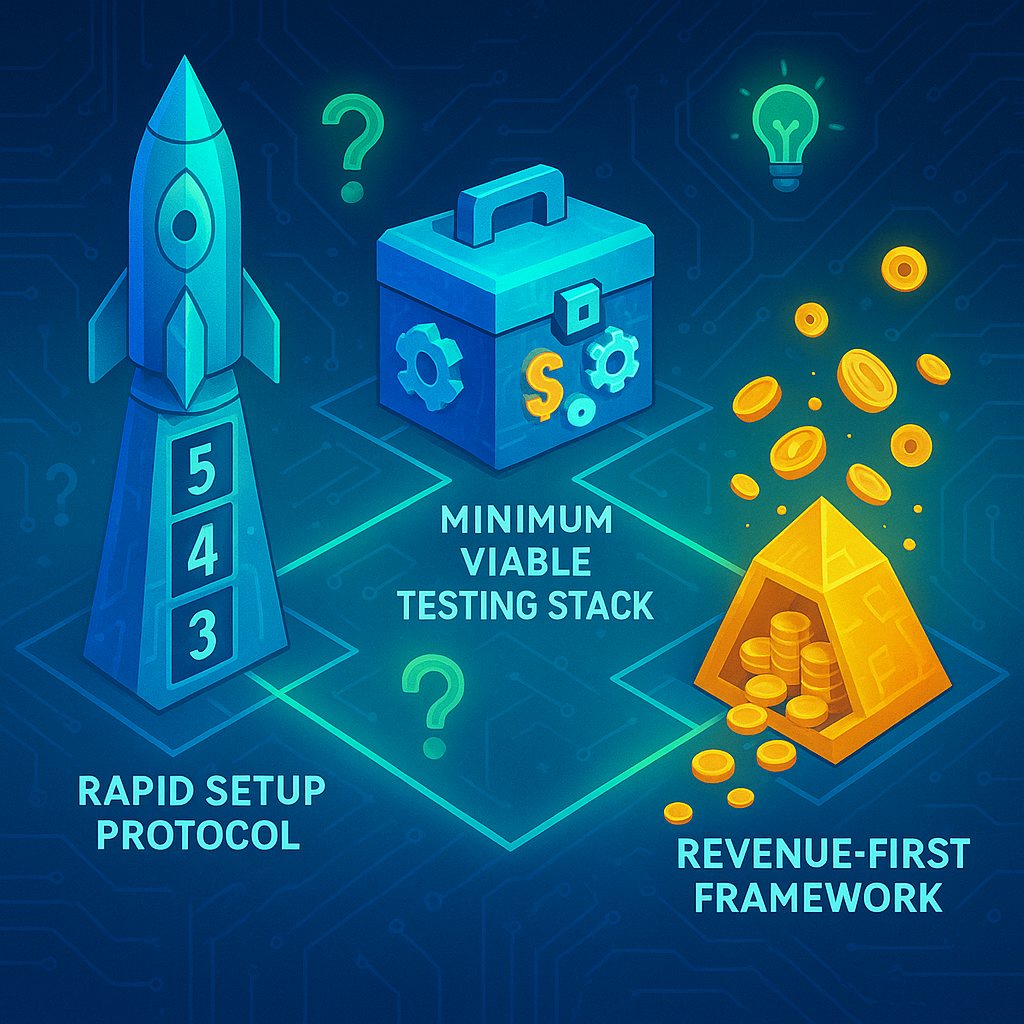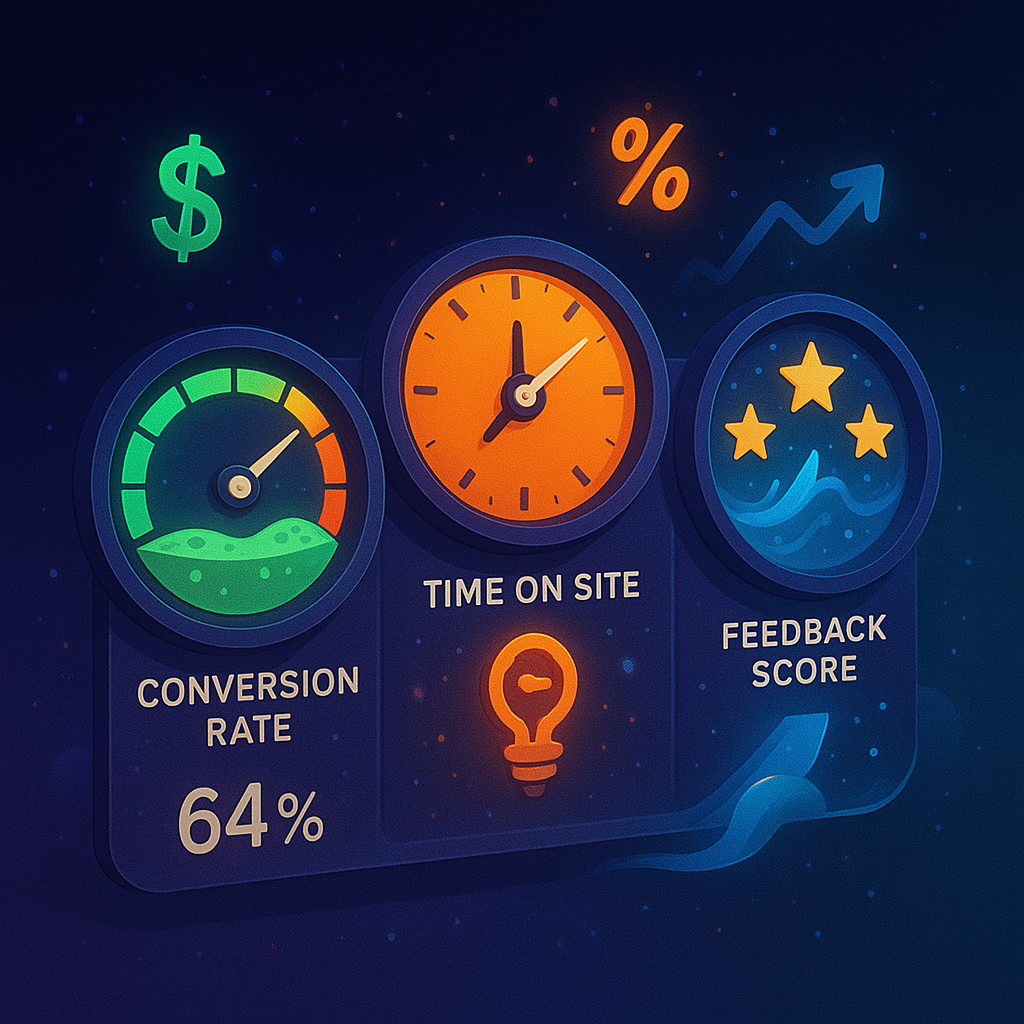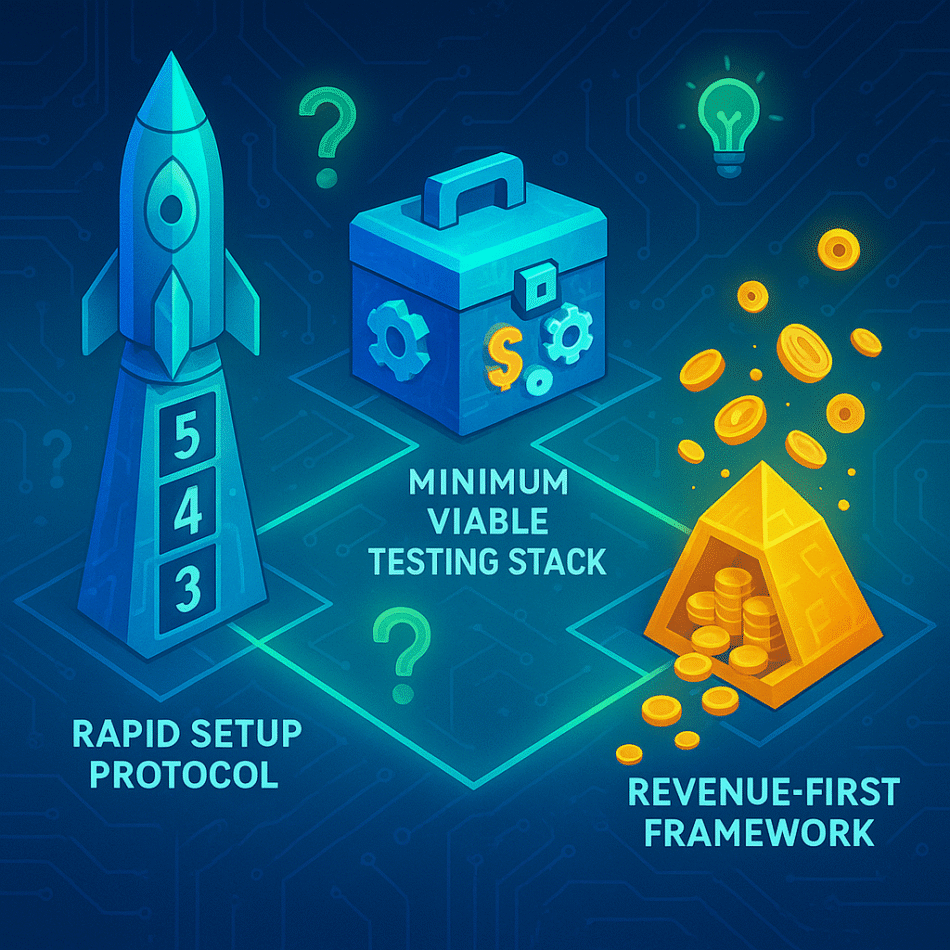Why You Don’t Need a Full Stack to Validate an Idea 🧼
Testing a business idea doesn’t have to drain your budget. At EIM, we guide founders through lean, cost-efficient validation methods that focus on proving demand before making big investments. By prioritizing the right tools and strategies, you can gather meaningful market feedback, keep expenses under control, and even generate revenue during validation.
Our lean financial approach includes:
• Rapid Setup – Get your validation running in days, not months, using free or low-cost tools.
• Focused Tool Selection – Choose only what’s necessary to collect actionable insights.
• Revenue-First Thinking – Explore ways to earn income while you’re still testing your concept.
When a new idea takes shape, it’s tempting to build complete infrastructure before showing it to the market. Founders often think they need every tool, integration, and automation in place to be taken seriously.
In reality, early validation thrives on simplicity. A lightweight setup enables you to test assumptions without being locked into expensive systems or lengthy build cycles. The lean approach isn’t about cutting corners; it’s about focusing on the essentials that prove whether the idea works financially.
Our lean validation approach prioritizes speed and capital efficiency. If your MVP can accept payments, deliver promised value, and capture real customer feedback, you already have the essentials to start testing. Everything else can wait until you confirm the model has traction. This mindset helps founders validate core assumptions faster and with fewer resources, reducing the risk of overbuilding before the market responds.

Tools We Recommend: Free, Freemium, and Founder-Friendly 🧪
Testing a business idea does not have to drain your budget. At EIM, we guide founders through lean, cost-efficient validation methods that focus on proving demand before making big investments. By prioritizing the right tools and strategies, you can gather meaningful market feedback, keep expenses under control, and even generate revenue during validation.
Our lean financial approach focuses on selecting tools that can grow with your validation process while keeping upfront costs low or zero. The goal is to enable rapid, cost-effective testing so you can focus on proving your concept before committing significant resources.
Landing Page Creation – For building simple landing pages, platforms like Carrd ($19/year), Webflow (free tier), or Squarespace ($12/month) allow you to get online in hours. These can go beyond placeholders by serving as conversion-focused validation tools that process real transactions.
Payment Processing – Accepting payments early is critical for validation. Stripe and Helcim integrate seamlessly and charge only when you make sales or even better direct deposit into a business account (e-transfer, ACH, EFT are completely free for you to receive).
No-Code Functionality – If you need to simulate product features, no-code solutions like Softr, Glide, or Bubble can create realistic experiences for feedback and testing. For service-based businesses, tools like Calendly for scheduling or Typeform for intake forms deliver professional workflows without custom development.
Communication & Analytics – Google Analytics (free), Hotjar (free tier for basic heatmaps), and Mailchimp (free for up to 2,000 contacts) provide essential tracking, engagement, and communication capabilities.
These options are low-risk because they are either free or inexpensive at the entry level, and they can grow with your needs. More importantly, they are quick to set up, letting you spend more time testing and less time building infrastructure you might not use. EIM’s lean tool selection philosophy prioritizes validation speed over feature completeness, and a simple stack that can process payments in 48 hours is more valuable than a complex system that takes weeks to implement.

Metrics to Track During Early Validation 📊
Even with a minimal setup, you should measure how potential customers interact with your offer.
Track conversion rate from page visits to purchases, time to first sale, and percentage of repeat customers. These numbers reveal more about viability than total traffic or social media engagement. Our analysis shows that startups achieving 5%+ landing page conversion rates during validation typically have a higher success rate in Series A fundraising.
For subscription or recurring models, early churn rates are important to watch. If customers drop off quickly, it could signal that onboarding needs improvement or that value isn’t clear enough. For one-time purchases, focus on customer acquisition cost and margin per sale.
Key Validation Metrics from EIM’s Framework:
- Conversion Rate: Target 3-7% for B2B, 1-3% for B2C
- Time to First Sale: Under 30 days for viable models
- Customer Feedback Quality: Specific requests indicate product-market fit signals
By tracking a small set of metrics that connect directly to revenue, you avoid getting lost in vanity metrics that feel good but don’t move the business forward. The Zero-Budget Validation Toolkit includes templates for tracking these metrics using free Google Sheets dashboards.

From Landing Pages to Invoices: Tactical Experiments That Pay Off 📬
The fastest way to validate is to create a clear path from discovery to payment. Start with a focused landing page that communicates your offer and its value. Include a direct call-to-action leading to a payment option, whether that’s online checkout, an invoice, or a booking link.
For service-based ideas, offer a limited number of paid trial spots and fulfill them manually. For product-based ideas, accept pre-orders with clear delivery dates. The goal is to observe real purchase behavior, not just collecting email addresses or survey responses.
What to Track, What to Ignore (For Now) ⏳
In the earliest stages, it’s better to ignore complex financial models and focus instead on the few signals that matter most: real payments, customer feedback tied to purchase behavior, and the efficiency of your acquisition process.
Focus On:
- Revenue generated during validation
- Direct customer feedback from paying users
- Cost per acquired paying customer
- Time from first contact to payment
Ignore For Now:
- Complex analytics dashboards
- Detailed user behavior tracking
- Advanced attribution modeling
You can add more sophisticated analytics later, but early on, the priority is determining whether people will buy and whether you can deliver in a way that makes financial sense. Overcomplicating your setup too soon can distract from these core questions.
EIM’s lean validation approach is about making each experiment count. By keeping your setup simple, your costs low, and your feedback loop short, you can learn faster, adapt sooner, and move toward a validated business model without wasting resources.
Natasha Galitsyna
Co-Founder & Creator of Possibilities @ EIM
Serving the startup community since 2018





